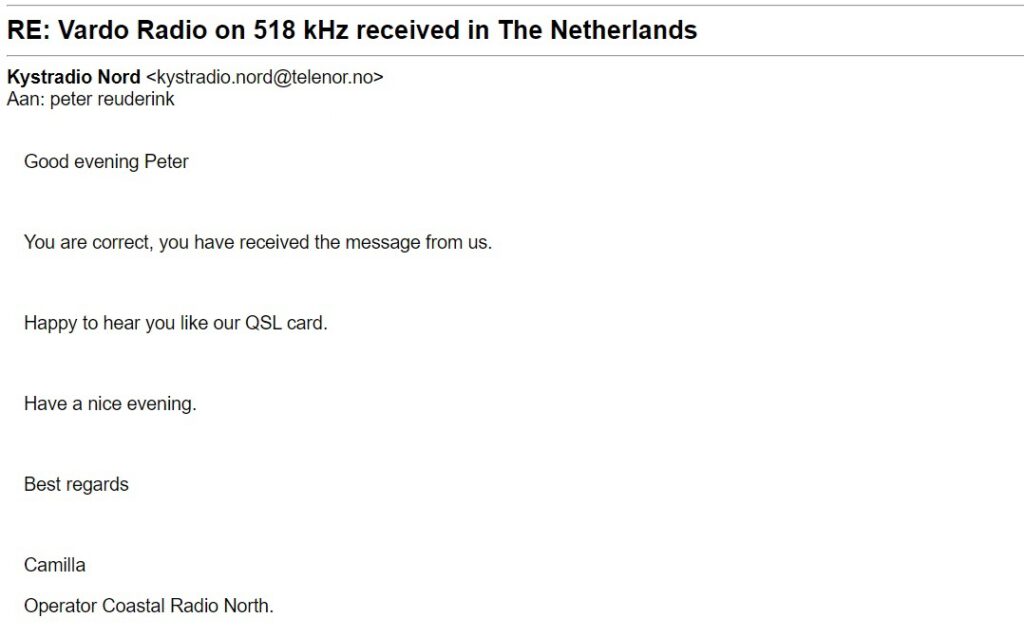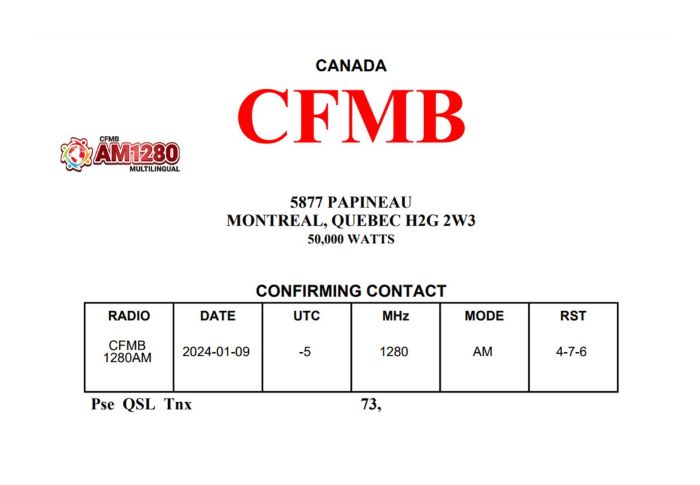My second attempt to QSL Polish Rescue Radio on 2187.5 kHz was successful!
Polish Rescue Radio operates from the city of Gdynia in Poland. I heard them with a DSC message to a cargo ship GT Foresti. When I checked the ship was in the Kiel canal, connecting the East (Baltic) Sea with the North Sea, on its way to Brake, a harbor in the Weser river, north of Bremen.

I snet my report to gmdss@umgdy.gov.pl . Polish Rescue Radio replaced Witowo Radio on January 1st, 2020. They have a very nice website that provides lots of info on their operations.

















